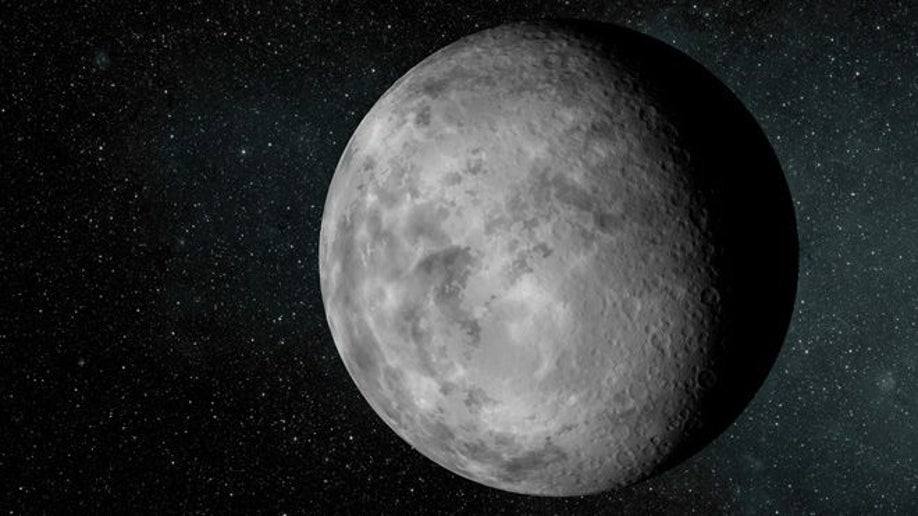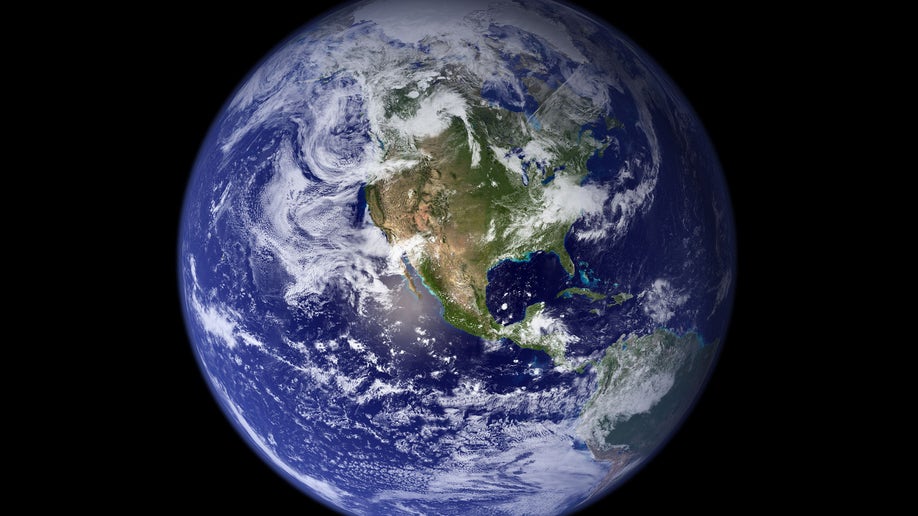Are we alone? The interstellar search for alien life
{{#rendered}} {{/rendered}}
Astronomers searching for planets outside our solar system discovered the tiniest one yet in late February -- one that's about the size of our moon. But the new world, known as Kepler-37b, orbits too close to its sun-like star and is too sizzling to support life. Its surface temperature is an estimated 700 degrees Fahrenheit. It also lacks an atmosphere and water on its rocky surface. (NASA/AMES/JPL-CALTECH)

Still, the quest is likely to yield life at some point. Astronomers have calculated that 6 percent of the galaxy's 75 billion or so red dwarfs stars smaller and dimmer than the Earth's own sun probably host habitable, roughly Earth-size planets. That works out to at least 4.5 billion such "alien Earths," the closest of which might be found a mere dozen light-years away. (NASA)
Meanwhile, NASA continues the quest for life in our own solar system. Mars rover Curiosity relayed new images in late February of the first sample ever collected from the interior of a rock on another planet. No rover has ever drilled into a rock beyond Earth and collected parts of it. (NASA/JPL-Caltech/MSSS)
Jan. 11, 2013: In the search for an Earth-like alien world, astronomers have had their eyes set on planets beyond our solar system. But some moons orbiting these exoplanets may be just as likely to support life, scientists say."There is a habitable zone for exomoons, it's just a little different than the habitable zone for exoplanets," said Rory Barnes of the NASA Astrobiology Institute. Pictured: Artist's conception of the three suns and the newly discovered Jupiter-sized planet from the perspective of a hypothetical moon orbiting the planet. (NASA/JPL-Caltech)
Jan. 9, 2013: A possible alien planet discovered by NASA's Kepler space telescope is the most Earth-like world yet detected beyond our solar system, scientists say. With a radius just 1.5 times that of Earth, the potential planet is a so-called "super-Earth," meaning it is just slightly larger than the Earth. Scientists say the planet, if confirmed, could be a prime candidate to host alien life. (PHL @ UPR ARECIBO, ESA/HUBBLE, NASA)
The Kepler space telescope, launched March of 2009, has been a key new asset in the quest for life. Using data from the scope, which can better scan the heavens from outside of Earth's atmosphere, scientists estimated in January that at least 17 billion Earth-sized exoplanets reside in the Milky Way Galaxy. (NASA)
Dec. 19, 2012: Astronomers detected five possible alien planets circling the star Tau Ceti, which is less than 12 light-years from Earth -- a mere stone's throw in the cosmic scheme of things. One of the newfound worlds appears to orbit in Tau Ceti's habitable zone, a range of distances from a star where liquid water can exist on a planet's surface. (J. PINFIELD / UNIVERSITY OF HERTFORDSHIRE)
Nov. 15, 2012: A potential "rogue" alien planet is wandering alone just 100 light-years from Earth, scientists said, suggesting that such starless worlds may be extremely common across the galaxy. The free-floating object, called CFBDSIR2149, is likely a gas giant planet four to seven times more massive than Jupiter. (ESO/L. CALÇADA/P. DELORME/NICK RISINGER (SKYSURVEY.ORG)/R. SAITO/VVV CONSORTIUM)
Nov. 8, 2012: Astronomers have detected an alien planet that may be capable of supporting life as we know it and it too is Earth's cosmic neighbor. Called HD 40307g, it's located inside its host star's habitable zone, a just-right range of distances where liquid water may exist on a world's surface. And the planet lies a mere 42 light-years away from Earth. (J. PINFIELD / UNIVERSITY OF HERTFORDSHIRE)
Nov. 2, 2012: Asteroid belts similar to the one between Mars and Jupiter appear to be rare beyond our solar system, implying that complex alien life may be rare as well, a new study reported. Fewer than 4 percent of known alien solar systems are likely to have an asteroid belt like the one in our own neck of the woods, researchers found. Belts that look like ours may help spur the evolution of life, seeding rocky planets with water and complex chemicals but not pummeling the worlds with a constant barrage of violent impacts. (NASA/ESA/STSCI)
Oct. 17, 2012: There's even an alien planet right in our solar system's backyard, but don't hope for an exploration mission anytime soon. The newfound world is much too far away for probes to visit using current technology, experts say. The scorching-hot alien planet Alpha Centauri Bb, which is about as massive as Earth, resides in the three-star Alpha Centauri system. While no other star is closer to our sun than the Alpha Centauri trio, they're still about 4.3 light-years away, making a close-up look at the planet pretty much impossible right now. (L. Calcada/European Southern Observatory/AP Photo)
The Allen Telescope Array -- a large number of small satellite dishes designed to add the search for extraterrestrial intelligence. In the desert northeast of San Francisco, California, the array is expected to someday consist of 350 antennas, constantly scanning the stars for signs of life. (SETI Institute)
Oct. 11, 2012: Move over, Hope Diamond. The most famous gems on Earth have new competition in the form of a planet made largely of diamond, astronomers say.The alien planet, a so-called "super-Earth," is called 55 Cancri e and was discovered in 2004 around a nearby star in our Milky Way galaxy. After estimating the planet's mass and radius, and studying its host star's composition, scientists now say the rocky world is composed mainly of carbon (in the form of diamond and graphite), as well as iron, silicon carbide, and potentially silicates. (HAVEN GIGUERE)
Sep. 27, 2012: The NASA rover Curiosity beamed back pictures of bedrock that suggest a fast-moving stream, possibly waist-deep, once flowed on Mars -- a find that the mission's chief scientist called exciting. There have been previous signs that water existed on the red planet long ago, but these images show pebbles rounded off, likely by water, offered the most convincing evidence so far of an ancient streambed. (AP/NASA)
Sep. 17, 2012: A warp drive to achieve faster-than-light travel -- a concept popularized in television's <i>Star Trek -- </i>may not be as unrealistic as once thought, scientists say. A warp drive would manipulate space-time itself to move a starship, taking advantage of a loophole in the laws of physics that prevent anything from moving faster than light. (HAROLD WHITE)
